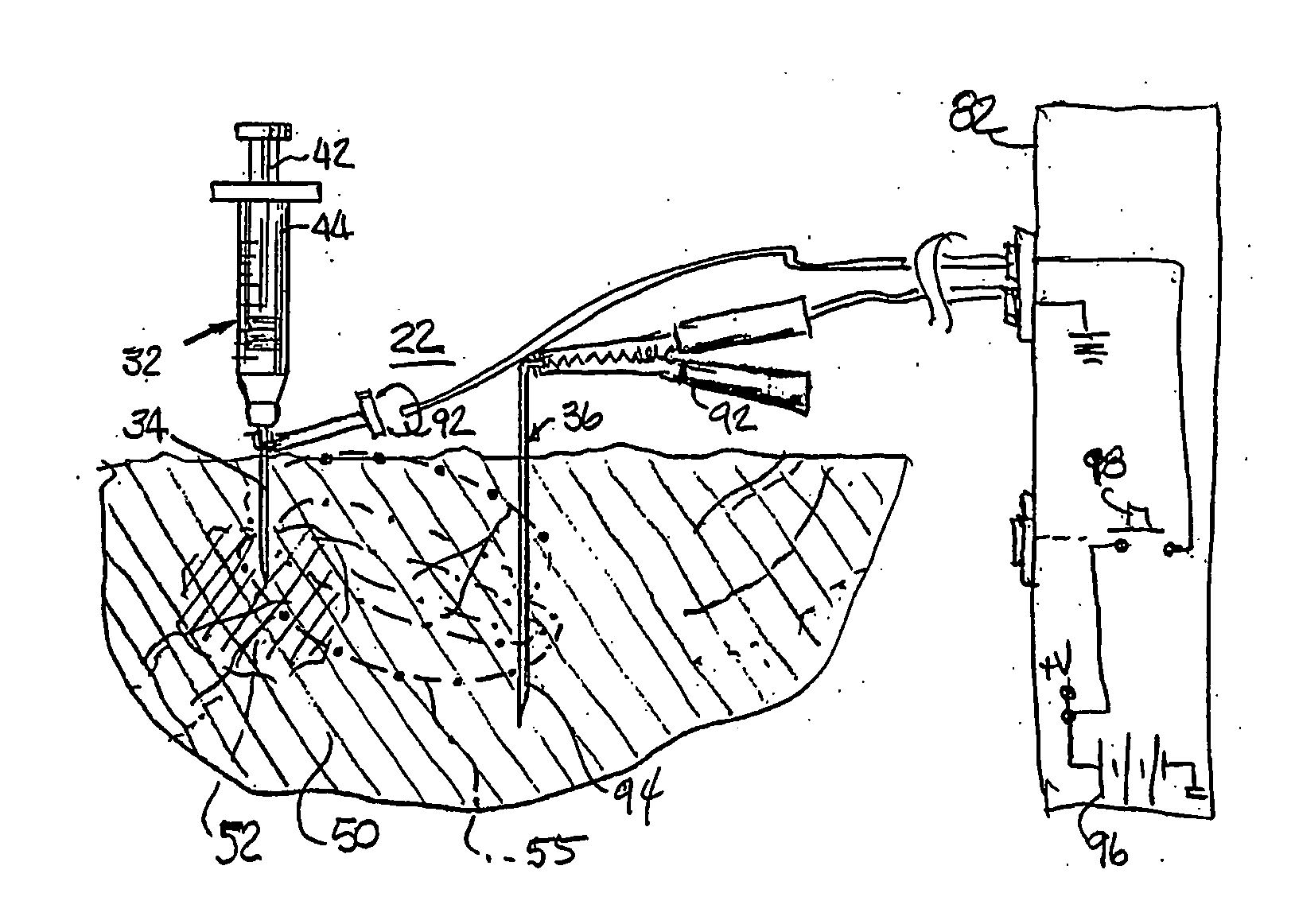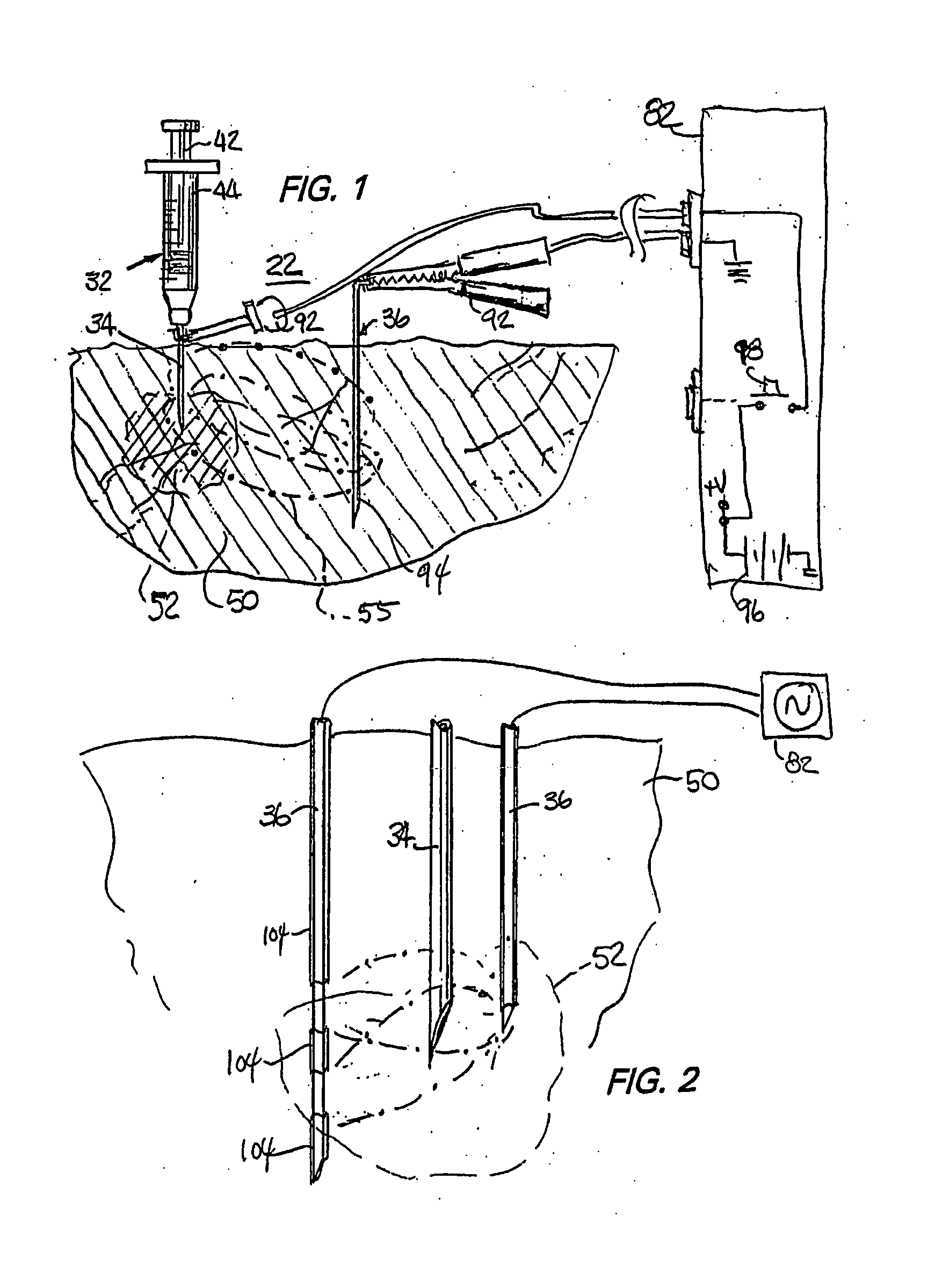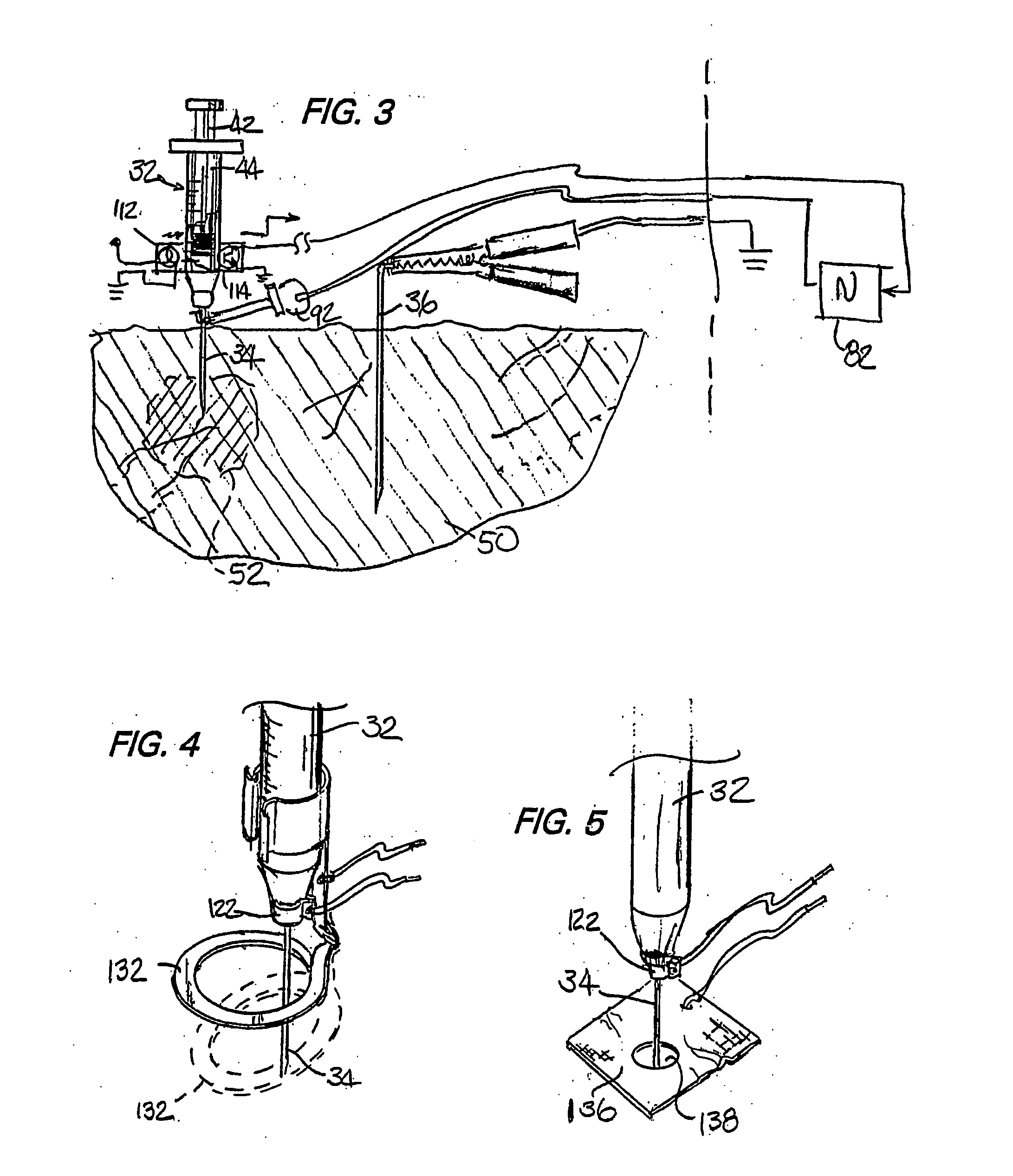Clinical syringe with electrical stimulation aspects
a technology of electrical stimulation and syringe, which is applied in the field of syringe apparatus, can solve the problems of damage to tissue permanently, damage to other parts, and damage to tissue,
- Summary
- Abstract
- Description
- Claims
- Application Information
AI Technical Summary
Benefits of technology
Problems solved by technology
Method used
Image
Examples
Embodiment Construction
[0061] For certain injectable pharmaceutical preparations it has been observed that electrical stimulation in the form of an applied current or electric field, at the site of the introduction of the pharmaceutical preparation, can possibly increase the effectiveness of the treatment compared to the same injection without the electrical stimulation. The present invention provides a mechanical and electrical means to provide the dosage form and the electrical stimulation simultaneously or sequentially with the same device during the same subcutaneous, intravenous, or intramuscular injection.
[0062] A treatment device 22 for this purpose, as shown generally in FIG. 1, can have a hypodermic syringe 32, and in addition to the sharpened cannula 34 of the syringe, has one or more additional electrodes 36. These can be penetrating electrodes of similar elongated gauge and sharpness as compared to the cannula 34 or can be shallower or deeper penetrating devices or even surface contactors. Th...
PUM
 Login to View More
Login to View More Abstract
Description
Claims
Application Information
 Login to View More
Login to View More - R&D
- Intellectual Property
- Life Sciences
- Materials
- Tech Scout
- Unparalleled Data Quality
- Higher Quality Content
- 60% Fewer Hallucinations
Browse by: Latest US Patents, China's latest patents, Technical Efficacy Thesaurus, Application Domain, Technology Topic, Popular Technical Reports.
© 2025 PatSnap. All rights reserved.Legal|Privacy policy|Modern Slavery Act Transparency Statement|Sitemap|About US| Contact US: help@patsnap.com



